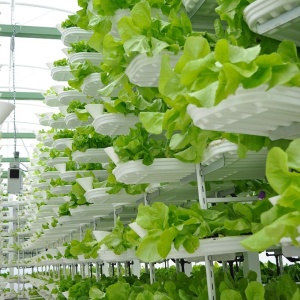
Indoor and vertical farming might not replace traditional farms, but they bring their own unique benefits.
Some crops grow particularly well indoors, and these are often ones that are best consumed as soon as possible after harvest - herbs, salad leaves and tomatoes, for example - which means they could be best suited to indoor farming near the point of consumption, freeing up farmland for crops that do better outdoors and cutting out transport. Indoor farming can be particularly efficient in terms of yield per unit area.
Read more here. See also the Foodsource resource How important is transport? and Michael Hamm’s blog post for the FCRN Feeding cities - with indoor vertical farms?







Post a new comment »